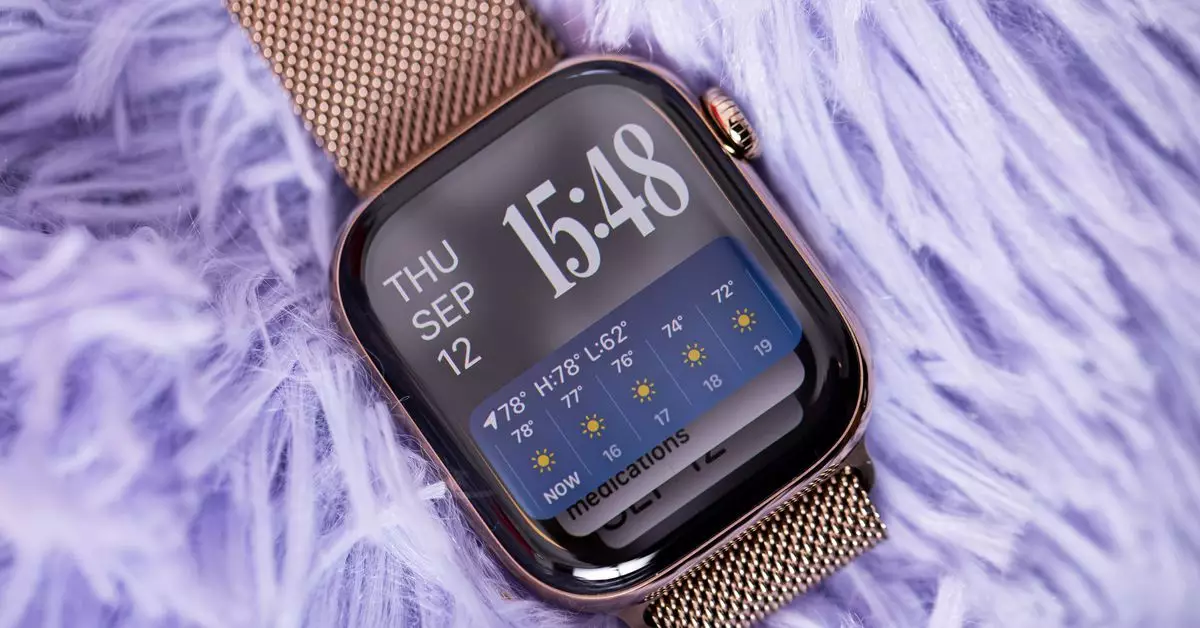As the calendar turns to a fresh year, many individuals in the United States are swept up in the tradition of setting New Year’s resolutions. Among these aspirations, health and fitness typically dominate the conversation, spurring people to evaluate and often revamp their lifestyles. Whether it’s a commitment to regular workouts, a healthier diet, or a more balanced approach to life, the pursuit of these goals is not only a common endeavor but also an enduring part of the culture. In this context, technology plays a pivotal role; gadgets that simplify tracking fitness goals or enhancing overall health are essential tools in the modern individual’s arsenal.
One prominent device that aligns with these goals is the Apple Watch Series 10, a sophisticated smartwatch that has become synonymous with fitness tracking. Currently available at major retailers like Amazon, Walmart, and Best Buy, the 42mm version is priced starting at $329—a $70 discount that matches its lowest price during the Black Friday sales. A slightly larger 46mm model is also available priced from $359, demonstrating Apple’s strategy to cater to different user preferences.
While the Apple Watch Series 10 may not present drastically novel features compared to its predecessor, it is a well-rounded device that remains appealing for casual athletes and tech aficionados alike. It boasts an impressive wide-angle OLED display, which delivers up to 30% more screen area than previous models—an upgrade that enhances usability significantly. Furthermore, with the inclusion of useful features like sleep apnea detection and an expedited charging process that allows users to charge from zero to 80% in just half an hour, the Series 10 stands out as a dependable choice for those committed to better health.
Another noteworthy improvement comes not from the hardware but through software enhancements with the latest watchOS 11. This update introduces a range of new training features, augmenting the device’s functionality and making it even more attractive to new users and those upgrading from older models. The “Training Load” feature offers insights into workout intensity, while the new “Vitals” app allows for a deeper understanding of recovery metrics. Among these changes, perhaps the most user-friendly addition is the option to pause Activity Rings, which many users have long requested.
While these updates may not be groundbreaking, they significantly enrich the user experience, creating a more tailored fitness journey. In a sea of competing fitness trackers that may offer specialized features for hardcore athletes, the Apple Watch’s ability to integrate seamlessly into the larger Apple ecosystem continues to set it apart.
Aside from the Apple Watch, various accessories and complementary devices can further enhance your fitness regime. Consider nomadic’s Holiday Hangover Sale, featuring 20% off on select items that can elevate your Apple Watch experience. From stylish bands to durable mobile accessories, maintaining a cohesive tech ecosystem is more attainable.
Additionally, Anker’s Soundcore Sport X10 earbuds are a noteworthy mention, now available for $49.99. With features like an IPX7 rating for sweat and water resistance, these earbuds are perfect for those gritty workouts. Their ergonomic design and powerful audio output make them an ideal companion for anyone starting a new exercise routine.
For those who favor Android devices, the Google Pixel Watch 3 is also making waves in the market, currently available for $299.99. This smartwatch presents a compelling alternative to the Apple Watch Series 10, particularly for those already integrated into the Google ecosystem. While both devices have their unique strengths, choosing between them largely depends on user preference and existing device compatibility.
As the New Year unfolds, the integration of technology into fitness and health is more palpable than ever. From robust smartwatches like the Apple Watch Series 10 to essential accessories and competitive alternatives, individuals have access to sophisticated tools that can aid them in realizing their fitness resolutions. The landscape of health tech is continuously evolving, paving the way for smarter, more effective ways to pursue long-term wellness goals. Thus, investing in the right device can be a proactive step toward cultivating a healthier lifestyle in 2025.

